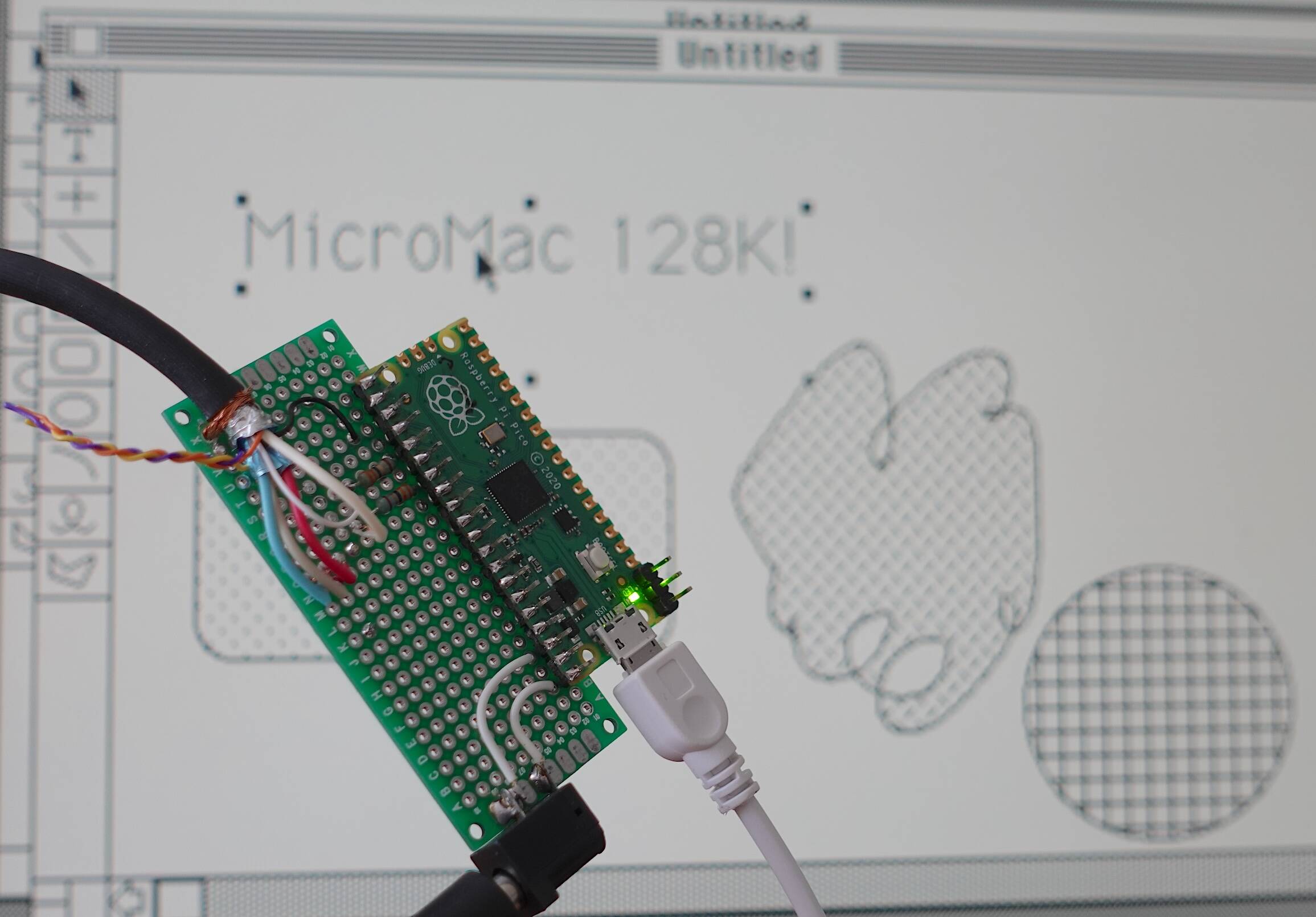
Unearthing Apple’s Macintosh 128K: Pi Pico’s Surprising Success
Key Takeaways:
In the fast-paced world of technology, it is easy for older devices to be forgotten. However, some masterpieces from the past continue to capture the attention of enthusiasts, even after decades. One such timeless creation is the Apple Macintosh 128K, commonly referred to as the Macintosh 128K. This groundbreaking computer, released in 1984, revolutionized the personal computing industry, thanks to its user-friendly graphical interface and built-in screen. Today, it enjoys a cult following, and its recent reunion with another trailblazing device, the Raspberry Pi Pico, only strengthens its enduring legacy.
The Apple Macintosh 128K: An Icon Revisited
The Macintosh 128K instantly captivated the market with its sleek design and innovative features. Its compact all-in-one design integrated the display, processor, storage, and input devices into a single unit. This groundbreaking concept introduced many people to a new era of computing, as it eliminated the need for separate components that were common at the time. With a large 9-inch built-in monitor, a mouse, and an intuitive graphical user interface, the Macintosh 128K democratized technology by making it accessible to a wider audience.
Apple’s Macintosh 128K featured an 8 MHz processor, 128 kilobytes of RAM, and a storage capacity of 400 kilobytes. While it may seem laughable by today’s standards, it was a significant leap forward at the time. Furthermore, its compact build and affordability helped Apple carve out a distinct place in the market, becoming a true underdog amid giants like IBM.
In subsequent years, Apple continued to innovate and release newer versions of the Macintosh line that featured more power and capabilities. However, the original Macintosh 128K continues to hold a special place in the hearts of many, seen as a symbol of Apple’s early success and rebellion against the status quo. This iconic status has paved the way for recent rejuvenation through an unlikely collaboration.
The Rise of Raspberry Pi Pico
While the Macintosh 128K was making waves in the ’80s, an entirely different kind of innovation emerged in more recent times. The Raspberry Pi Foundation, a UK-based non-profit organization, introduced the Raspberry Pi series microcontrollers. Known for their ease of use, affordable price points, and versatility, Raspberry Pi devices have revolutionized the way people learn and tinker with technology.
One of the latest additions to the Raspberry Pi lineup is the Raspberry Pi Pico. Unlike its predecessors, the Pico doesn’t feature the typical integrated Linux computer found in previous Raspberry Pi offerings. Instead, it’s a microcontroller board based on the company’s own chip, the RP2040. Despite being a stripped-down version without on-board Wi-Fi or Ethernet capabilities, it has become increasingly popular due to its simplicity and concentrated power.
The Raspberry Pi Pico impresses with its dual-core Arm Cortex-M0+ processor and 264 kilobytes of SRAM. Developers love its flexibility, as it can be programmed using MicroPython, CircuitPython, or C/C++. It supports a wide range of projects, including robotics, smart home automation, and IoT (Internet of Things) applications. Its long hours of battery life, extensive GPIO (general-purpose input/output) pins, and ample programming options have made it a favorite among hobbyists and professionals alike.
The Surprising Synergy
With such a rich history surrounding the Apple Macintosh 128K and the recent success of the Raspberry Pi Pico, it was only a matter of time before the paths of these two impressive devices crossed. To the astonishment of many tech enthusiasts, an ingenious hacker managed to get both devices working together harmoniously, rejuvenating the classic Macintosh computer with a dash of modern brilliance.
The integration of Raspberry Pi Pico into the Macintosh 128K enables users to take advantage of its additional computational power, extensive programming options, and IoT capabilities without compromising the original Macintosh experience. This incredible feat allows the Macintosh 128K to effectively break free from its nostalgic confines, unlocking the potential for modern applications.
The creative possibilities unleashed by this collaboration are boundless. Now, users can enhance their Macintosh experience by effortlessly connecting sensors, actuators, and other components to leverage the Raspberry Pi Pico’s capabilities. The synthesis of old and new empowers both young and old tech enthusiasts to explore the intersection between history and future possibilities, inspiring countless new projects built upon this unlikely synergy.
Frequently Asked Questions
Conclusion
The Apple Macintosh 128K and the Raspberry Pi Pico represent two iconic devices from different eras. The Macintosh 128K’s enduring popularity speaks to its groundbreaking design, which challenged the norms of personal computing. On the other hand, the Raspberry Pi Pico’s unexpected rise showcases the never-ending innovation of the Raspberry Pi Foundation.
Now, with their paths intertwined, it’s clear that the legacy of the Macintosh 128K continues to captivate enthusiasts around the world. The surprising collaboration between these two devices highlights the unique confluence of history and technology, and offers boundless opportunities for future projects and innovations.
Source: insidertechno.com